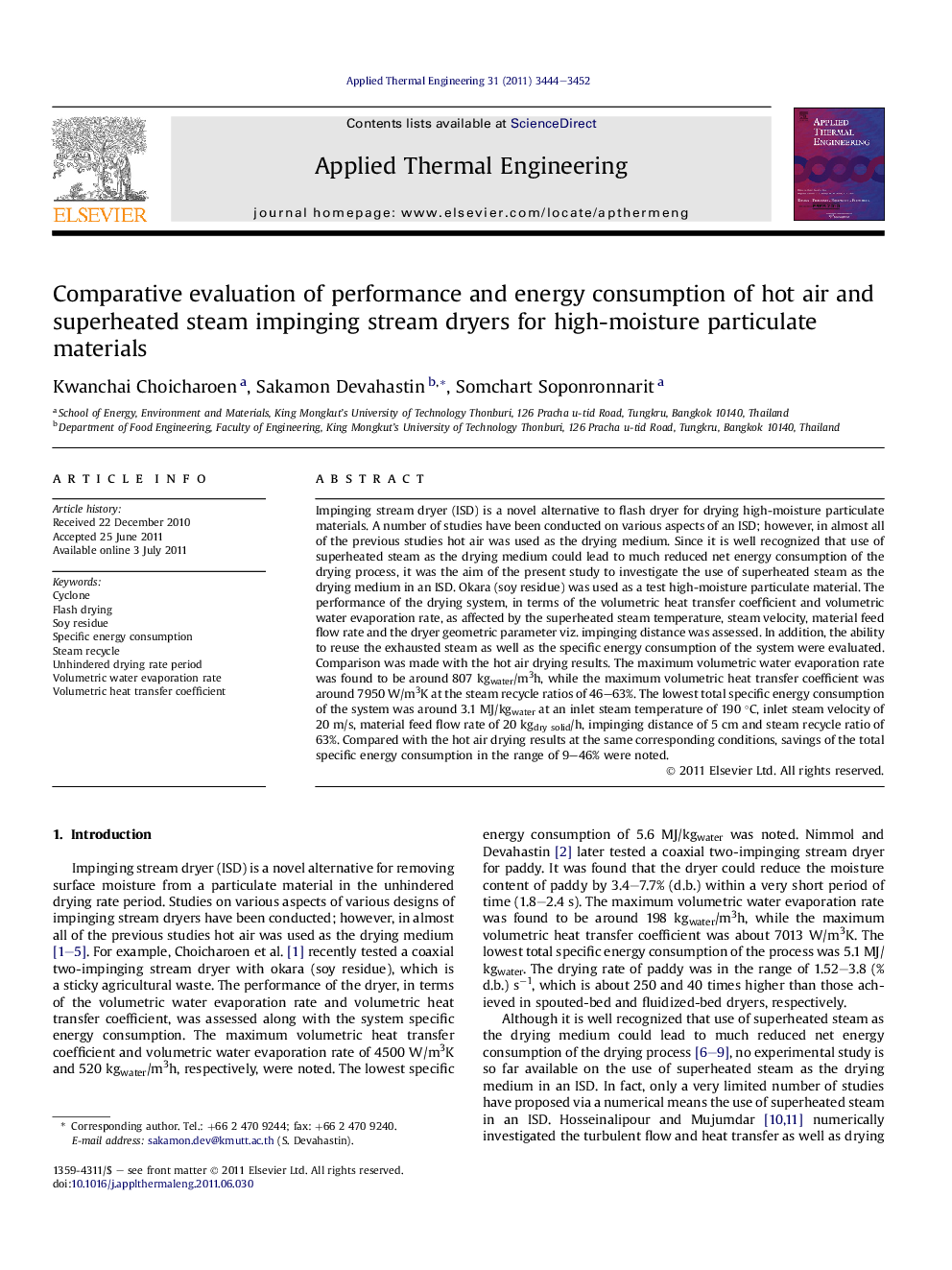| Article ID | Journal | Published Year | Pages | File Type |
|---|---|---|---|---|
| 647684 | Applied Thermal Engineering | 2011 | 9 Pages |
Impinging stream dryer (ISD) is a novel alternative to flash dryer for drying high-moisture particulate materials. A number of studies have been conducted on various aspects of an ISD; however, in almost all of the previous studies hot air was used as the drying medium. Since it is well recognized that use of superheated steam as the drying medium could lead to much reduced net energy consumption of the drying process, it was the aim of the present study to investigate the use of superheated steam as the drying medium in an ISD. Okara (soy residue) was used as a test high-moisture particulate material. The performance of the drying system, in terms of the volumetric heat transfer coefficient and volumetric water evaporation rate, as affected by the superheated steam temperature, steam velocity, material feed flow rate and the dryer geometric parameter viz. impinging distance was assessed. In addition, the ability to reuse the exhausted steam as well as the specific energy consumption of the system were evaluated. Comparison was made with the hot air drying results. The maximum volumetric water evaporation rate was found to be around 807 kgwater/m3h, while the maximum volumetric heat transfer coefficient was around 7950 W/m3K at the steam recycle ratios of 46–63%. The lowest total specific energy consumption of the system was around 3.1 MJ/kgwater at an inlet steam temperature of 190 °C, inlet steam velocity of 20 m/s, material feed flow rate of 20 kgdry solid/h, impinging distance of 5 cm and steam recycle ratio of 63%. Compared with the hot air drying results at the same corresponding conditions, savings of the total specific energy consumption in the range of 9–46% were noted.
► Impinging stream dryer (ISD) is a novel alternative to flash dryer for drying high-moisture particulate materials. ► Use of superheated steam as the drying medium in an ISD. ► Compared with the hot air drying results at the same corresponding conditions, savings of the total specific energy consumption in the range of 9–46% were noted.
